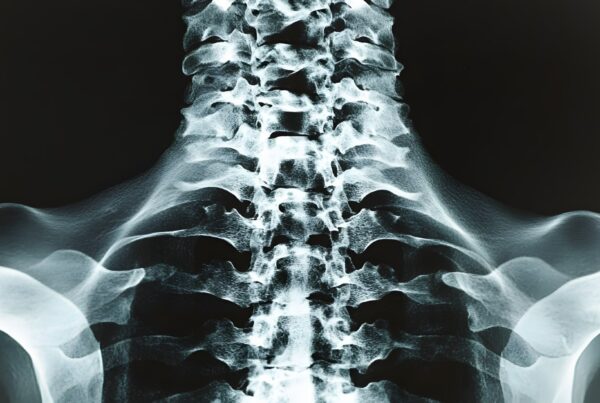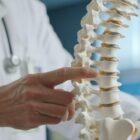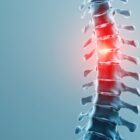Pulsatile tinnitus (PT) is an abnormal perception of rhythmic sound without an external source. About 3 to 5 million Americans suffer from pulsatile tinnitus. This is different from “ringing in the ears” which is a constant noise that usually affects both ears.
What are Pulsatile Tinnitus Causes?
People with PT often describe the noise as a whooshing sound. It often is described as hearing the sound of your own blood “whooshing” through your ears. It can be in one ear or in both. Often those sounds appear more prominent at night or in a quiet environment, and in fact may not be perceived at all during the day. The noise may also worsen with high blood pressure.
White noise or sound therapy may lessen the noise. PT can also have a tremendous impact on patients’ psychological and physical health, leading to trouble sleeping, anxiety, depression, and poor concentration.
Seeking an underlying cause of cause of PT is essential because many of them pose a risk of stroke or blindness, while other causes may be treated to address the symptom itself and its annoyance. Advances in neuroimaging and neurointerventional treatment have resulted in increased detection of PT that is caused by abnormalities on the blood vessels. New therapeutic options have burgeoned too.
Once a “vascular cause” has been established, treatment recommendations should be based on the natural history of the disease, treatment risks, and the efficacy of treatment. Typically, those causes cannot be treated with medication. A hearing test, blood tests and evaluation by an Ear Nose Throat (ENT) doctor is frequently normal.
Cognitive behavioral therapy and tinnitus reraining therapy are good options to deal with the sound, but some causes of PT are treatable with minimally invasive neurointerventional treatment methods.
Those cases of PT are caused by a narrowing of one of the large arteries, veins, or both in the head and neck. The narrowing, or stenosis, disrupts the flow of blood and can lead to the whooshing sound or other noises referred to “hearing your own heartbeat”
Imaging is usually needed to find a cause for PT. MRI of the brain shows details of the brain and the inner ear. Magnetic resonance angiography (MRA), magnetic resonance venography (MRV), computerized tomographic angiography (CTA) and computerized tomographic venography (CTV) can check the arteries and veins inside the head. These tests can detect abnormal narrowing or short circuit connections. A carotid ultrasound is best to diagnose a narrowing of the carotid artery.
Medical advice can be best pursued from a neurointerventional or cerebrovascular neurosurgeon, in the event a vascular cause has been identified.
Venous Causes
Amongst all causes of vascular PT, a vein issue can often be distinguished from an arterial one on the basis of history and physical examination. Venous PT is described as a lower pitched whooshing sound that can be alleviated by neck maneuvers.
In particular, compression of the jugular vein in the neck can either lessen or worsen the sound. Half of all venous pulsatile cases are caused by increased pressures in the brain (idiopathic intracranial hypertension (IIH), formerly known as pseudotumor cerebri). This disease can also cause headaches, blurry vision (papilledema), and/or dizziness, and it is more common in heavier people.
Multiple medications have been linked to this disease, with most evidence for hypervitaminosis A, tetracyclines and growth hormone. Stopping those medications may result in resolution of the PT and other symptoms. For most patients, first line treatment consists of weight loss and acetazolamide, a medication that lowers the intracranial pressure, but those medications are often less well tolerated. If medicines and non-operative strategies don’t work, other surgical treatment options may be indicated. There are also newer neurointerventional treatment options, such as venous sinus stenting.
Another venous cause of PT is a compression of a vein in the transverse or sigmoid sinus which are large venous channels that carry the blood out of the head back to the heart. A narrowing can be found with or without signs of elevated intracranial pressures and symptoms. It typically can be caused by a blood clot or overgrown tissue. The narrowing alters the hemodynamics and causes turbulences. That kind of turbulent blood flows behind the ear and reverberates through the bone to the hearing structures with every heart beat. Venous sinus stenting has been used to alleviate symptoms in a few series of patients, and is being heavily studied.
Sometimes the turbulences can cause thinning of the bone and outpouching of vein into the bone called diverticulum. In some cases those can be treated with a venous stent and/or small platinum coils that are being delivered through a small tube utilizing special X-rays called fluoroscopy. Surgical options exist too.
Other vein abnormalities are less well studied causes of PT, such as abnormalities of the jugular vein, and small emissary veins that connect the inside of the skull with the outside and they are characterizied by a thin wall. Some of them can be implicated in PT.
The Tri-State's leaders
in Cerebrovascular treatments.
Arterial Causes
There are many arterial causes that can lead to PT, and commonly an ultrasound of the carotid is used to diagnose diseases such as carotid or vertebral artery narrowing/stenosis, which can be caused by arteriosclerosis. Carotid dissection, another cause of PT, which may or may not be associated with a painful injury to the carotid artery. Those kind of injuries are often as a result of trauma, but trauma can be quite mild, and sometimes the association between the trauma and the injury is not temporarily related.
Aneurysms, vascular malformation, and abnormally formed carotid arteries may need more detailed evaluation with advanced neuroimaging.
Treatment of arterial causes of PT usually result in resolution of symptoms. Often, indications for treatment of the arterial causes of PT include not only the disabling symptom itself, but prevention of stroke as well.

About Dr. Dorothea Altschul
Dr. Dorothea Altschul is an accomplished neurointerventionalist in North Jersey and is the Clinical Director of Endovascular Services at Neurosurgeons of New Jersey, practicing out of their Ridgewood office located on East Ridgewood Avenue.







